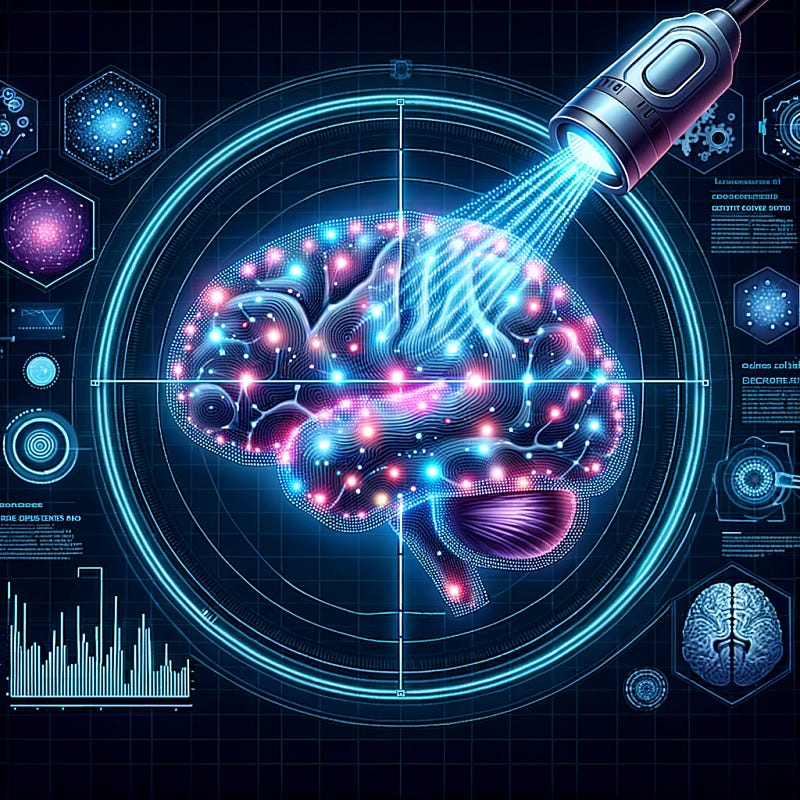# The Future of Thought Sharing: A New Era of Communication Awaits
Written on
Chapter 1: The Concept of Real Thought Sharing
Imagine the ability to share your thoughts, feelings, and mental images directly with others, transcending the need for spoken language or visual media. Emerging technologies may soon facilitate this groundbreaking form of "real thought sharing."
This paragraph will result in an indented block of text, typically used for quoting other text.
Section 1.1: Understanding Real Thought Sharing
Real thought sharing refers to the transmission of your raw sensory experiences, emotions, and cognitive patterns to another individual. Advances in brain imaging and neural simulation could soon enable the digital representation of your subjective consciousness, allowing someone else to experience your thoughts and feelings as if they were their own. This concept fundamentally differs from simply articulating experiences; it allows for a direct experience of another's consciousness, fostering unprecedented levels of empathy, connection, and understanding.
Section 1.2: Current Limitations in Achieving Thought Sharing
For first-person experiences to be shared, the technology must decode and recreate the neural correlates of consciousness—the brain activity patterns that underpin subjective experiences. Presently, several obstacles hinder this progress:
- Insufficient mapping between neural activity and specific thoughts.
- Limited resolution and accuracy of brain imaging techniques like fMRI and EEG.
- Difficulty in simulating intricate neural data across various brain regions.
Nevertheless, ongoing research holds promise for overcoming these challenges within the next 10 to 20 years.
Chapter 2: Decoding Consciousness
To achieve real thought sharing, it is essential to decode the neural patterns associated with specific conscious experiences. Identifying the extensive network of neurons involved is a highly intricate task. However, advancements in machine learning applied to large datasets are significantly enhancing decoding precision.

Currently, algorithms can reconstruct facial images and even video representations of what someone perceives based on limited brain data. Over the next few decades, we can expect a dramatic increase in decoding fidelity, allowing for the identification of neural patterns related to abstract concepts, emotions, and even imagined ideas.
Section 2.1: Enhancements in Brain Scanning Techniques
Mapping brain activity with high precision is crucial for capturing the neural complexities that fuel our consciousness. While current fMRI and EEG technologies are rapidly advancing, they still lack the fine resolution necessary for effective thought sharing.

Emerging methods, such as next-generation magnetoencephalography (MEG), which measures neural electromagnetic activity, could achieve sub-millisecond resolution. Coupled with ingestible nanosensors embedded in neurons, future brain mapping could reach the level of single-neuron precision, paving the way for effective thought sharing.
Section 2.2: Neurostimulation Technologies
The final challenge lies in the technology needed to replicate the neural patterns of consciousness within another person's brain. This could potentially be accomplished through precise neurostimulation that activates mirrored neuron firing patterns across various brain regions.

Early studies indicate the possibility of recreating basic sensory stimuli. With significant advancements in precision and processing capabilities, sophisticated neural networks might one day activate complex cognitive experiences and emotions identified through brain scans.
Video Description:
The A.I. Dilemma - March 9, 2023 - This video explores the ethical considerations and implications of AI technologies in our daily lives.
Chapter 3: The Timeline for Real Thought Sharing
Conservative estimates suggest that basic real thought sharing technologies may surface by 2050 or even earlier. Initially, these technologies might focus on transmitting simple impressions or emotions. By 2100, we could potentially see the digital transfer of high-fidelity consciousness streams.

Despite these optimistic projections, significant technical and ethical hurdles remain. There is increasing pressure from sectors like memory enhancement, education, entertainment, and healthcare to expedite progress. While these predictions are speculative, real thought sharing has the potential to dramatically alter society over the next 50 to 100 years.
Chapter 4: Initial Applications of Thought Sharing
In the early stages, thought sharing technologies may facilitate specific types of consciousness transfers, such as:

- Sharing basic concepts and reactions
- Transmitting emotions and intuitive feelings like empathy
- Enhancing communication for individuals with paralysis
- Memory sharing among witnesses or experts
- Immersive learning experiences
- Expanding understanding in psychoanalysis
While these capabilities could revolutionize social interactions, education, healthcare, and personal development, fully conveying continuous consciousness remains a more distant aspiration.
Chapter 5: The Potential Impact of Thought Sharing
The ability to share thoughts could drive significant advancements, such as:

- Genuine empathy through shared experiences
- Alleviating loneliness by forming deep mental connections
- Fostering consensus and reducing conflict via mutual awareness
- Accelerating innovation through effortless idea exchanges
- Enhancing healthcare and therapy via shared experiences
- Creating unfiltered human connections beyond verbal language
The possibilities are nearly limitless. The sharing of minds could reshape human relationships and societal structures.
Chapter 6: Ethical Considerations and Risks
Despite the remarkable potential, thought sharing technology carries significant risks, including:

- Erosion of privacy
- Identity confusion from shared consciousness
- Coercive manipulation and mental harm
- Social pressure to conform
- Inequitable access to enhancements
- Cognitive overload from excessive shared information
Without careful management, these risks could destabilize society. Implementing strict security measures, ethical guidelines, and robust social frameworks will be crucial in ensuring positive outcomes while navigating this new frontier.
Video Description:
The 3 Year AI Reset: How To Get Ahead While Others Lose Their Jobs | Emad Mostaque - This discussion focuses on adapting to the evolving landscape of AI and job displacement.
Chapter 7: The Path Forward
For the foreseeable future, real thought sharing will likely remain experimental or limited in scope. Early adopters may include healthcare professionals and tech enthusiasts. However, by the mid-2000s, we might witness the mainstream emergence of real-time mental experience sharing through specialized implants and neural interfaces.

While it is challenging to predict the exact timeline, you may see the beginnings of genuine telepathic technology within your lifetime. Perhaps future generations will share their thoughts as easily as we send text messages today.
Chapter 8: Envisioning the Future of Consciousness
The direct digitization and transmission of thoughts, emotions, and memories is merely the beginning. Emerging neurotechnologies may profoundly expand human consciousness, allowing individuals to connect their minds across distances and enhance both collective and individual intelligence. This could lead to hybrid neural networks merging biological and artificial cognition, offering a new dimension in interpersonal communication.

By collaboratively exploring the enigmas of consciousness, we may unlock capabilities beyond our current understanding. While the path to achieving real thought sharing is fraught with challenges, its realization within the next century could initiate a new era of cognitive evolution. A shared and empowered mind holds immense potential to enhance the human experience.
Conclusion
Despite significant technical challenges, the emergence of real thought sharing is likely as rapid advancements in brain imaging, neural decoding, and neurosimulation technologies continue. In the coming decades, expect initial applications in communication, healthcare, entertainment, and education. Over time, the direct sharing of emotions, sensations, memories, and complex ideas could become a reality.

The potential for connecting minds could drastically transform our society. However, navigating this transition will require careful consideration and management to mitigate potential risks. As we begin to break down barriers between our innermost thoughts, we must advance with caution, empathy, and wisdom.